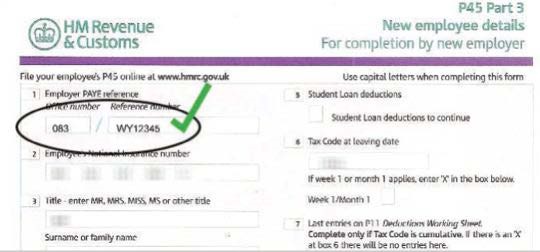Business interruption insurance (BI) provides cover for financial losses due to an interruption to a business caused by material damage to property. Cover is typically incorporated into a package or commercial combined policy.
Typical cover provided
There are 3 key elements to consider with a business interruption policy:
- The time period for which the interruption will affect a business – known as the indemnity period.
- The maximum amount that needs to be insured.
- The basis of cover to insure.
Common types of business interruption insurance cover are:
- Increased Costs of Working Only
- Gross Profit Basis
The indemnity period
This is defined as ‘the period beginning with the occurrence and ending not later than the maximum indemnity period thereafter, during which time the business is affected by the interruption occasioned by the damage’. The period for which insurers will pay for any losses is limited to this and in deciding the maximum indemnity period you will need to take into account various factors including the activities of the business, the time it will take to replace specialist machinery, customer make-up and other factors that may have an impact upon the speed of the firm’s recovery to its anticipated trading position. For example, potential disruption to supply chains and labour markets following Brexit or the COVID crisis.
Increased cost of working only
This form of cover is common for businesses whose income would not be reduced in the event of physical damage to their own property. Typically, it is suitable for office-based businesses or contractors whose income is generated from work away from their own premises, where an interruption such as a fire at their own offices, would not impact income or profit significantly. Although remote working practices are more common for these businesses, additional costs could be incurred in order to minimise any interruption to trading, such as rental of temporary premises or additional staffing costs.
Gross profit
Another form of Business Interruption insurance is Gross Profit. This is more commonly insured by businesses that generate income from business activity undertaken at their own premises, such as a manufacturer or retailer.
This basis of cover would trigger where a business suffers a loss of income following damage or destruction at their own premises (such as fire). Apart from tangible damage to the premises, in this scenario a business could also suffer a loss of income from which to pay the expenses of the business and make a profit. The business may also incur extra costs to maintain their turnover which would be covered on the understanding that any additional costs incurred avoids a loss of Gross Profit by an equivalent amount – this is often referred to as the “economic limit”.
The cover is not designed to replace the total income generated by the activities of a business which may be lost as a result of damage to the premises. The turnover of the business is used to pay the costs of running the business and to generate a net profit. The costs can in turn be divided between:
- variable costs: those that reduce in direct proportion to the reduction in turnover, such as raw materials, and
- fixed costs: those that must still be paid even if the business is not operating, such as rent.
As the variable charges will reduce in direct proportion to the reduction in turnover, the policy therefore, only needs to cover the net profit and fixed expenses (which are often called ‘standing charges’). Rather than a business having to list all the standing charges (and possibly omitting to include something), insurers instead arrange cover now on a difference basis. The “gross profit” to insure is calculated by deducting variable expenses (which are also known as uninsured working expenses) from the turnover. The figures are adjusted for differences between opening and closing stock.
Most Gross Profit Basis policies are written on a ‘Declaration linked’ basis. This type of cover requires an estimate of the gross profit for the forthcoming year. Insurers then apply a one-third uplift automatically to take account of any future growth in turnover.
Cover also includes the cost of accountants’ or auditors’ fees incurred in preparing a claim and this is the only class of insurance that allows for the preparation of a claim to form part of the claim itself.
Please see our guide on how to correctly calculate a Gross Profit sum insured.
Other bases of cover
Although a business interruption insurance cover is written on an increased cost of working or gross profit basis for many businesses, there are other forms of cover which are tailored to circumstances or to the needs of certain types of business. These include:
- Additional increased cost of working (which removes the economic limit referred to above)
- Gross revenue/fees/rentals cover
- Engineering
- Advanced profits
Optional extensions (not available under all policies)
A standard business interruption policy covers losses which are a result of insured damage at a firms own premises. However, a business may also be affected by damage at third party premises for which a number of extensions to cover are available. Such extensions are often subject to an additional premium but not to the material damage warranty.
The most common extensions include cover for losses resulting from:
- damage at the premises of a supplier
- damage at the premises of a customer or at a contract site
- damage to the property of a business whilst in transit
- damage to nearby premises preventing a business from accessing their own premises
- damage at the premises of a public utility supplier
Other extensions may be available to cover losses due to the occurrence of a predetermined notifiable disease, vermin, defective sanitary arrangements, murder and suicide; either at their premises of within a certain distance, although these vary significantly in the market.
An inner policy limit applies to the cover provided by each of these extensions.
Business Continuity Planning
Businesses should continue to regularly review their plans to consider changes to their business and other external factors that could influence the ongoing operation following an interruption.
If you would like to discuss your Business Interruption insurance requirements further, please do not hesitate to get in touch with your usual Darwin Clayton contact.
Latest Articles

Underinsurance Claims Scenario
You wouldn’t want to hear that your insurance won’t be enough to cover a claim. Businesses across the UK that are already struggling, thanks to surging inflation and its knock-on effect on

Underinsurance & what it means to your business
What is underinsurance? Your insurance premium is calculated based on your individual circumstances and the amount of cover you choose to take out to protect your business. Underinsurance occurs when you’ve not

Employer Reference Numbers for ELTO requirements
What is an ERN? The Employer Reference Number (ERN), also known as the Employer ‘Pay As You Earn’ (PAYE) reference, is a unique combination of letters and numbers that HMRC uses to

Why consider Employment Practices Liability cover?
The complex nature of employment laws means that companies need to keep up to date with changes to legislation and regularly review and update internal procedures. For businesses of any size, employment
